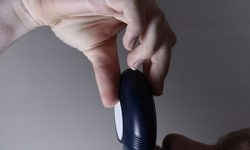What are Blackheads and How to Get Rid of Them
Blackheads, also known as open comedones, are dark looking pimples or bumps on the skin that appear like very fine moles. But they actually are openings in the skin. Even though they are called blackheads, these comedones are not always black and sometimes are yellow in color.

Blackheads are one of the most common manifestations of acne vulgaris and occur around the world. Blackheads are called open comedones because they are like open skin pores and looking inside them give the sensation of darkness in color.
Blackheads Cause
Blackheads are the sebaceous glands or the oil glands in the skin that get clogged up due to the presence of excess oil in the ducts. The material that clogs up the sebaceous glands comprises of keratin and sebum.
Keratin is a protein structure that makes up hair and nails, and sebum is an oily fluid secreted by the sebaceous glands. Sebum also contains melanin, which is a naturally occurring chemical responsible for the dark pigmentation of skin. This is why blackheads often look yellowish. The sebum does not actually look the way it appears in the case of blackheads as it turns dark once it reacts with oxygen.
Contrary to the common misconception, blackheads are not caused by poor hygiene. As a matter of fact, blackheads depend on the type of skin and their intensity varies from person to person. Hereditary factors, hormone activity and skincare methods, all affect the appearance of blackheads.
Blackheads Treatment
While blackheads are a benign condition, they are a considerable aesthetic problem that irritates millions around the world. This is why people are always looking for effective ways to get rid of blackheads. Blackhead removal methods concentrate on cleansing and exfoliation in one way or another.
Blackheads Home Remedies
There are several home remedies for removing blackheads but there is no solid scientific evidence to suggest their effectiveness in most cases. Nevertheless, these remedies do target exfoliation and cleansing as well. However, anything that effectively exfoliates can work to some extent. Lemon juice, beaten egg white, tomato pieces, almond oil and even toothpaste are applied on the parts of skin where blackheads occur in these methods. Then the skin is rinsed after necessary peeling with warm water.
Blackhead Removing Pore Strips
One of the effective but temporary methods of removing blackheads is using pore strips. Blackhead removal pore strips are available as cosmetic products, but could prove a slight burden on your budget. Even though strips offer improved results, they fail to prevent their recurrence.
Clay Masks
Another cosmetic method to remove blackheads is to use clay masks for exfoliation. However, these masks require regular application for effective results. The mask contains abrasive material that cleanses and exfoliates the skin.
Microdermabrasion
Microdermabrasion is the professional treatment for the removal of blackheads and is carried out by a dermatologist or plastic surgeon. An invasive method, it involves skin peeling and requires the administration of local anesthesia to avoid pain. The treatment is also used for a number of more serious skin conditions.
Exfoliating Chemicals
Baking Soda
Baking soda is a chemical easily and often available at home and can prove effective to exfoliate the skin.
Glycolic Acid and Salicyclic Acid
A more aggressive method of getting rid of blackheads is using exfoliating chemicals such as Glycolic Acid and Salicylic Acid. Both these exfoliating agents are more effective when used in combination. These chemicals are effective in cleansing clogged pores as they chemically attract lipids present in the sebaceous oils. Glycolic Acid and Salicylic Acid also get rid of debris and dead skin cells.
Retinoids
Another group of important and effective exfoliating agents is retinoids. Retinoids are Vitamin A derivative chemicals that are available in both prescription and over-the-counter products, with the former being more effective in results. The treatment requires frequent application over a period of four to six weeks.
Newsletter
Get our Tips and Tricks to your Inbox



